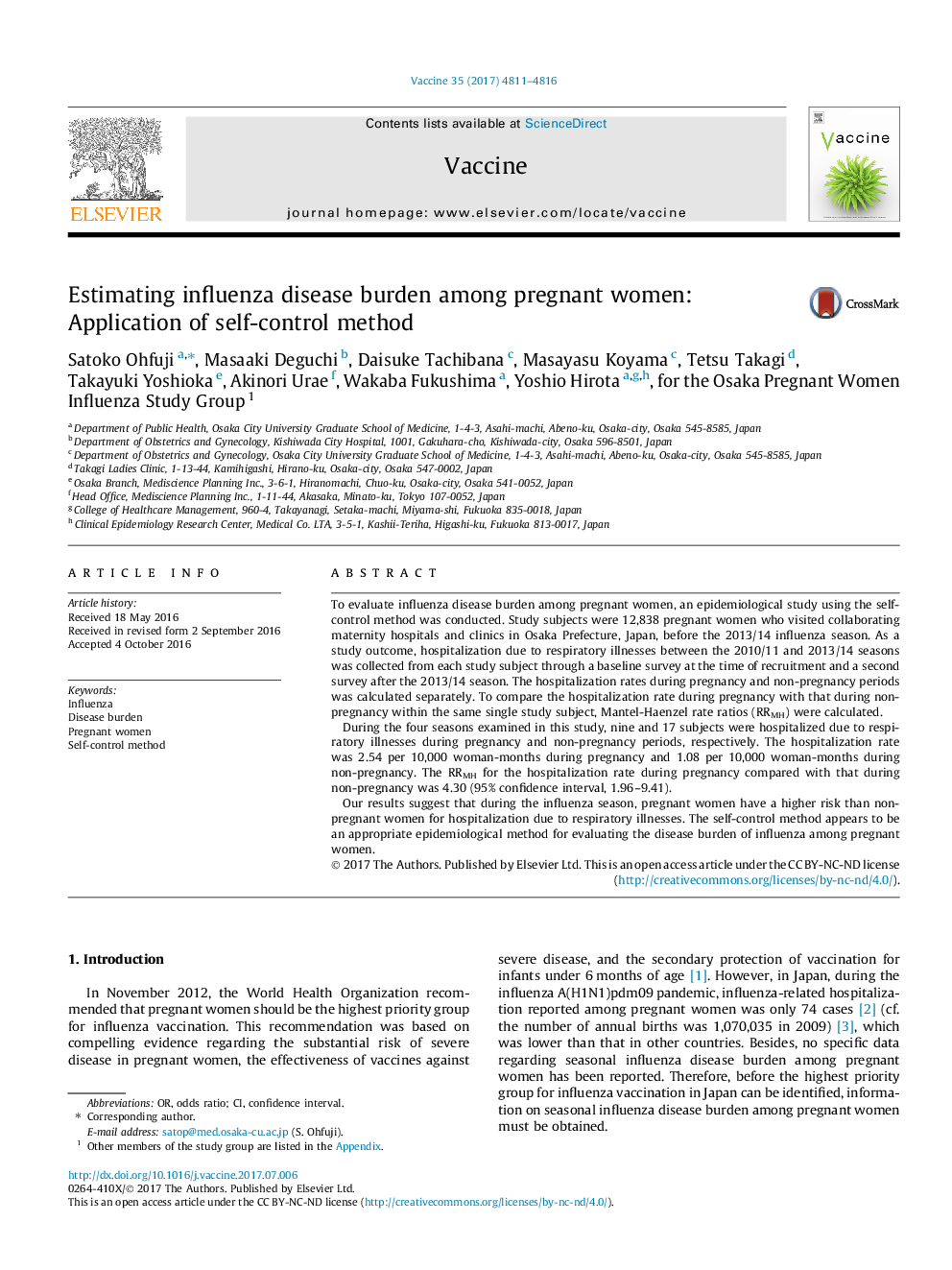| Article ID | Journal | Published Year | Pages | File Type |
|---|---|---|---|---|
| 5537025 | Vaccine | 2017 | 6 Pages |
â¢Self-control method applied to evaluate influenza disease burden during pregnancy.â¢Hospitalization rate due to respiratory illnesses was higher during pregnancy.â¢Self-control method is useful for evaluating disease burden during pregnancy.
To evaluate influenza disease burden among pregnant women, an epidemiological study using the self-control method was conducted. Study subjects were 12,838 pregnant women who visited collaborating maternity hospitals and clinics in Osaka Prefecture, Japan, before the 2013/14 influenza season. As a study outcome, hospitalization due to respiratory illnesses between the 2010/11 and 2013/14 seasons was collected from each study subject through a baseline survey at the time of recruitment and a second survey after the 2013/14 season. The hospitalization rates during pregnancy and non-pregnancy periods was calculated separately. To compare the hospitalization rate during pregnancy with that during non-pregnancy within the same single study subject, Mantel-Haenzel rate ratios (RRMH) were calculated.During the four seasons examined in this study, nine and 17 subjects were hospitalized due to respiratory illnesses during pregnancy and non-pregnancy periods, respectively. The hospitalization rate was 2.54 per 10,000 woman-months during pregnancy and 1.08 per 10,000 woman-months during non-pregnancy. The RRMH for the hospitalization rate during pregnancy compared with that during non-pregnancy was 4.30 (95% confidence interval, 1.96-9.41).Our results suggest that during the influenza season, pregnant women have a higher risk than non-pregnant women for hospitalization due to respiratory illnesses. The self-control method appears to be an appropriate epidemiological method for evaluating the disease burden of influenza among pregnant women.
